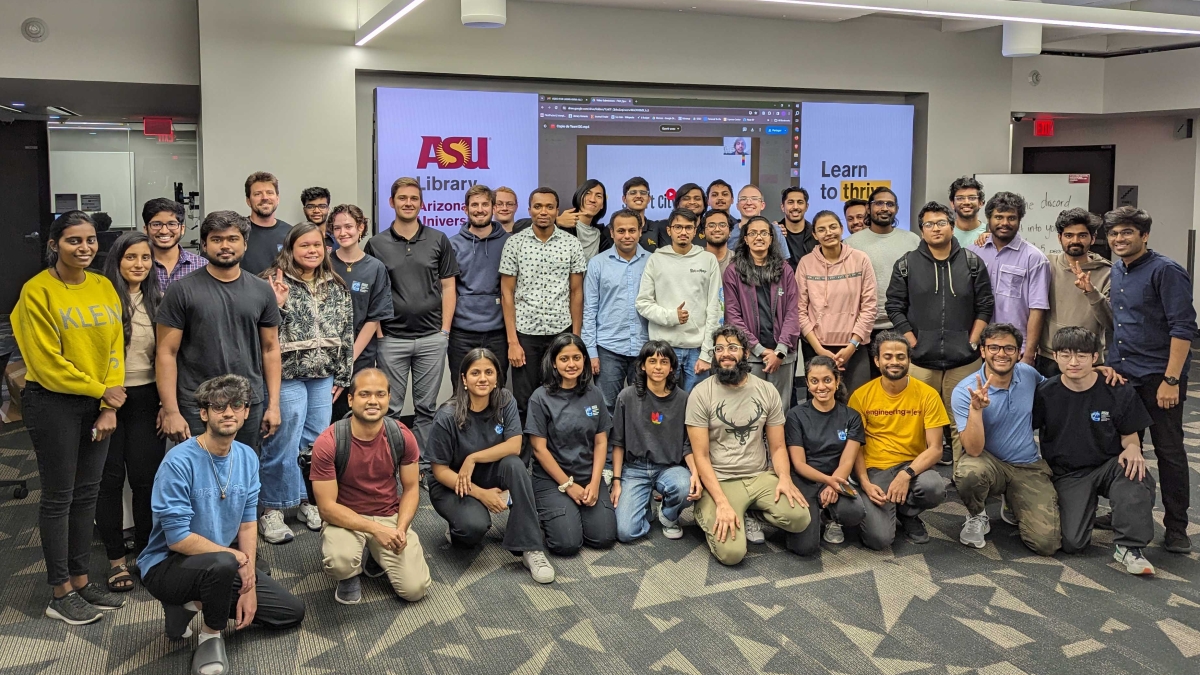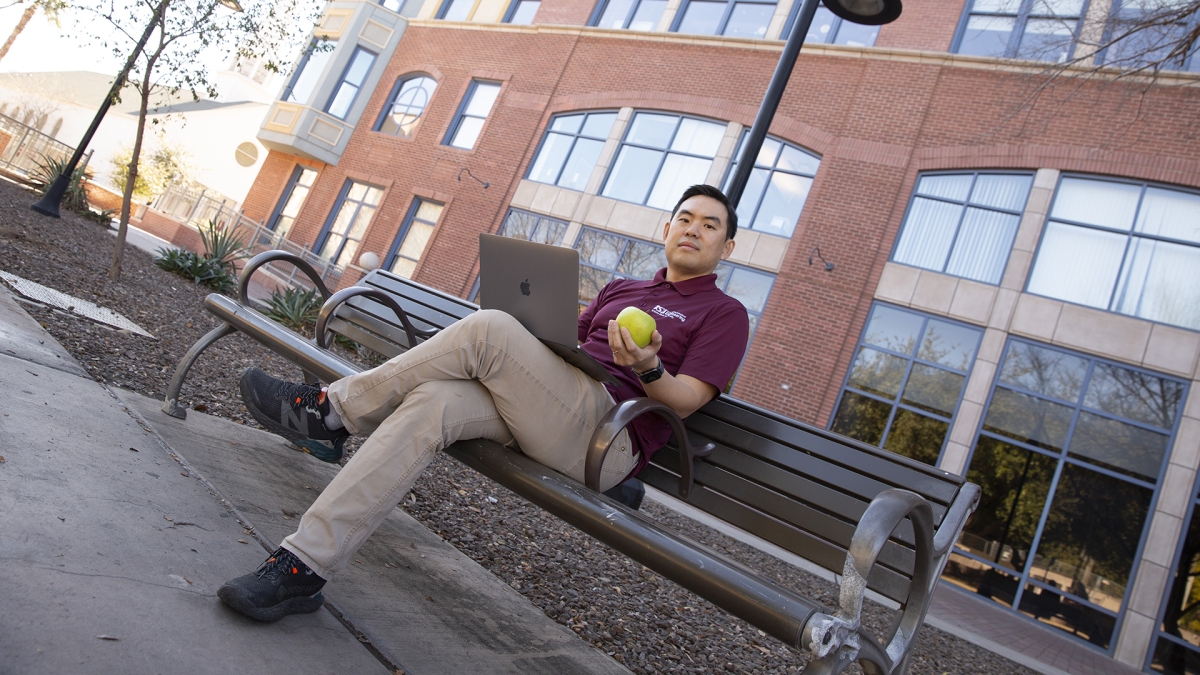Collateral damage is not inherent in innovation
ASU professor says technological advances need better oversight to protect public safety

Two recent fatalities related to autonomous vehicles are raising concerns about trade-offs between societal progress and human collateral damage.
While technological advances can make our lives easier and safer, that progress can come with a steep price: a human life. Christopher Jones, an assistant professor of history in the School of Historical, Philosophical, and Religious Studies at Arizona State University, joined ASU Now to discuss these pressing issues.
Jones, who researches and teaches the history of energy, technology, and environment, believes when proper safety protocols are put in place to protect citizens and workers, “innovators have found ways to advance new technology with much lower levels of collateral damage.”
Christopher Jones
Question: The public reaction to the Uber driver who accidentally killed a pedestrian last month, while not unsympathetic to the victim, indicates some believe that with certain technological advances comes collateral damage. Are innovation and fatalities inextricably linked in manufacturing technology?
Answer: No. Innovation and death are not inextricably linked. One of the most advanced and arguably dangerous technologies in the world — Japan’s shinkansen, or bullet trains — have not experienced a fatality in 50 years of operations. When proper safety protocols are put in place to protect citizens and workers, innovators have found ways to advance new technology with much lower levels of collateral damage. Will Uber eventually resume self-driving cars? Yes, that is very likely. Should they? Yes, but with much better regulation. The major problem was not that they were testing this new technology, it was that they did so with almost no oversight of their operations to protect public safety.
Q: Innovation in technology seems to be happening at lightning speed these days. Are we living in a time of unprecedented technological change?
A: Many historians argue no. While it is true that the last couple decades have witnessed enormous changes in information technology, other eras have undergone more radical transformation. Consider the couple decades surrounding the turn of the 20th century. At the nation's centennial in 1876, few people had access to indoor plumbing and most owned two to three sets of clothing, had no central heating, and never moved faster than their feet or a horse could carry them. By the start of World War I, people lived in a world of electrified homes, automobiles, streetcars, and a much broader range of consumer goods that had never been experienced before. So from a history of technology perspective, there have been eras where the everyday conditions of life have changed more from than in this era.
Q: How does society usually react to a massive technological overhaul such as self-driving vehicles, and what’s the usual rate of adoption in terms of time?
A: First, I'd argue that autonomous vehicles are not nearly as radical a break as the introduction of automobiles in the first place, or airplanes. With autonomous vehicles, you still have a world of travel in cars (with the necessary infrastructure of roads, fueling stations, parking lots, etc.) It's a pretty big deal that people aren't driving, but people are still getting from point A to point B in a car. It is not, therefore, as revolutionary as going from having no cars to having widespread automobile ownership.
Unfortunately, it's not possible to define a “usual” in terms of social adoption of technologies, because it's always specific to time and place. I'd expect there to be different levels of interest and protest over autonomous vehicles in different countries, and perhaps even in different states within the U.S. It is true that there have often been eager early adopters of new technologies in times past (the historical equivalent of your friend who would sleep out at the Apple store to be the first to have a new iPhone), just as there have been those who have been quite resistant.
Typically, it takes several decades (from) the introduction of a new technology (to) widespread adoption, though a governing factor is often price. Most major new technologies come at significant expense, and so even if there wasn't a great deal of resistance, you still might find most of the population unable to afford the new technology. Consider air travel, for example, which until a half a century after it was introduced was largely restricted to the wealthy because of its cost.
Q: Any idea when you think autonomous vehicles will be commonplace on our public streets and roads?
A: I expect we'll see autonomous vehicles continue to be introduced and become more widespread within a decade. Though I'm not a technological forecaster, I see two main reasons to think it will move forward. The first relates to the powerful vested interests behind it. In short, some very large and powerful companies stand to gain a great deal of money from autonomous vehicles, while those who lose out will be the millions of Americans in driving professions (truckers, bus drivers, delivery vehicles, taxis, etc.) who are not nearly as well organized.
Second, there is a legitimate safety argument to be made that if done carefully and with proper oversight, autonomous vehicles could be a safety improvement, given the demonstrated ways in which humans cause accidents through inattention, distraction, or inebriation.
Learn more about autonomous vehicles
• Expert ASU panel: A different standard for self-driving cars
• Autonomous vehicles traveling the wrong road to safety, engineer says
• Humans must drive initiatives for autonomous vehicle safety
• Flying cars are coming, and they'll be autonomous
Top photo courtesty of Pixabay.com
More Science and technology

SpaceHACK highlights student solutions to environmental challenges, digital divide
By Adrianna Nine About 250 students from around the world convened online and at Arizona State University on March 22 for the ASU Interplanetary Initiative’s second annual SpaceHACK for…

New AI for a new era of discovery
As the legend goes, in 1665, Sir Isaac Newton sat in his garden at Woolsthorpe Manor in England and looked on as a lone apple dropped from a tree branch, falling straight down. This chance encounter…

ASU receives 3 awards for research critical to national security
Three researchers in the Ira A. Fulton Schools of Engineering at Arizona State University have received grant awards under the Defense Established Program to Stimulate Competitive Research, or…
